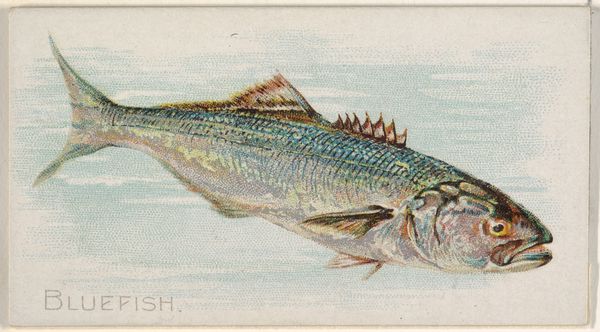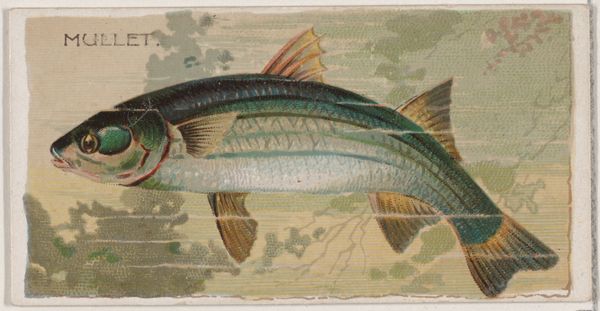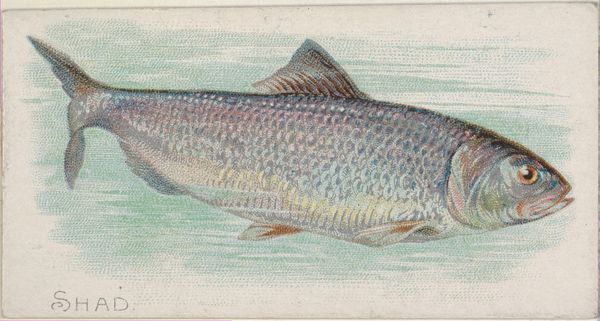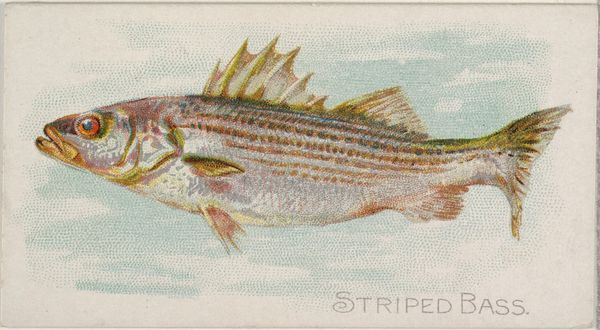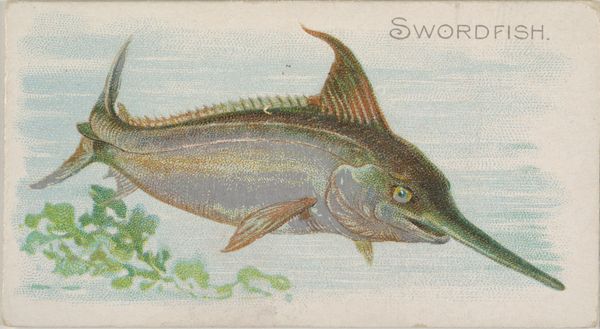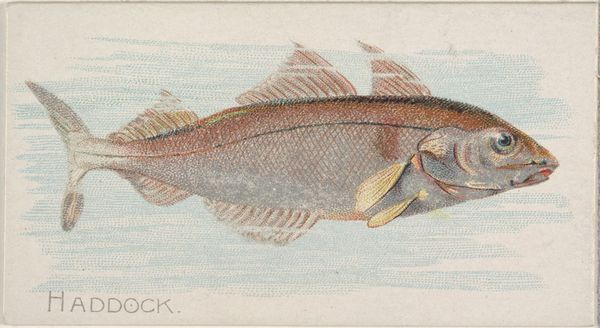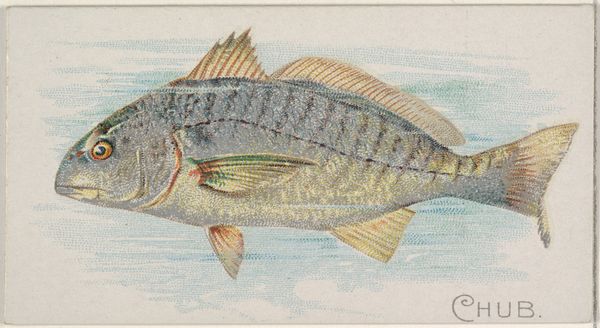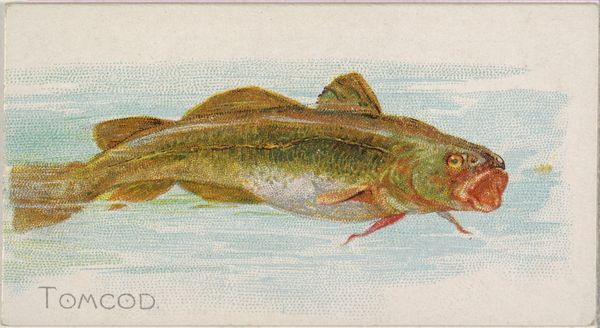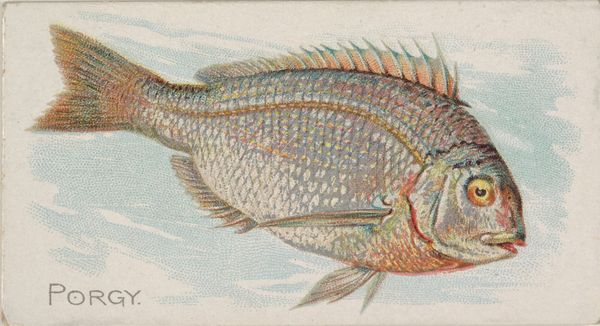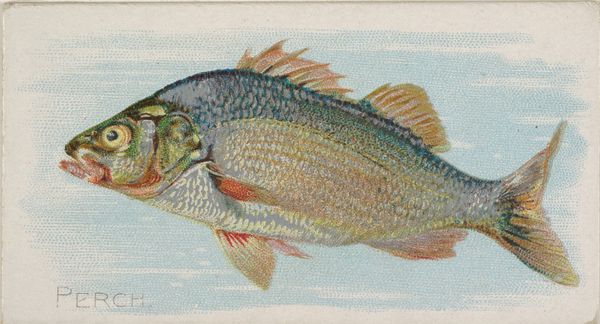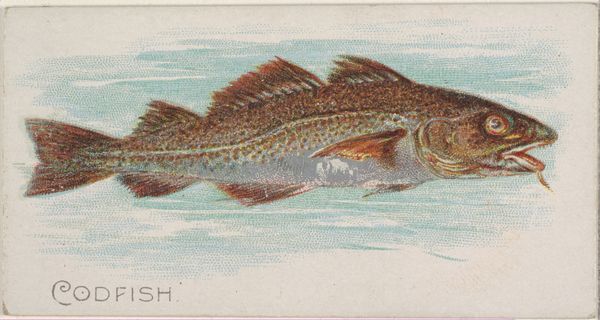
Whitebait, from the Fish from American Waters series (N8) for Allen & Ginter Cigarettes Brands 1889
0:00
0:00
drawing, print, watercolor
#
drawing
#
fish
# print
#
impressionism
#
watercolor
#
pencil drawing
#
watercolour illustration
#
watercolor
Dimensions: Sheet: 1 1/2 x 2 3/4 in. (3.8 x 7 cm)
Copyright: Public Domain
Curator: Welcome to the gallery. We're looking at a chromolithograph called "Whitebait," an 1889 print from the "Fish from American Waters" series, produced by Allen & Ginter for their cigarette brands. Editor: My first impression is how delicate and ethereal the fish appears. The pastel blues and whites give it a dreamy, almost otherworldly feel. There is something very serene here. Curator: Indeed. Allen & Ginter were known for their meticulous artistry, and it’s clear they understood how to create visually appealing collectibles. If we look closely at the tiny scales, for example, they seem painstakingly rendered. The lines are minimal, and the forms appear softly sculpted by subtle washes of color. Editor: The subject matter—whitebait—is particularly relevant when discussing 19th-century consumption culture. These tiny fish, often a seasonal delicacy, were part of a larger ecological narrative often exploited by rising consumerism. This card is not just a pretty image; it inadvertently comments on human intervention and resource exploitation. Curator: I see your point. I am more intrigued by the print's aesthetic composition, how the artists created depth with the lightest washes of blue and the subtle texture to evoke a sense of the fish's environment. There’s also the interesting choice of composition. Centering the single fish suggests a subject of observation, something under study. Editor: Exactly. But studied for what purpose? The consumption-oriented culture drove this focus on minute detail, and that needs to be taken into consideration as well. This "observation" becomes entwined with capitalist ambitions to commodify the natural world, a story of class and access. Curator: Fair enough, but I still admire the skill evident in rendering the iridescence of the scales. There’s also a charm in how a common subject, like a fish, can become something quite striking simply by careful and detailed artistic execution. Editor: And there it is, the commodification that captures the eye! Whether intentional or not, this delicate artwork presents complex issues within environmental and economic history and it's a story that must be explored. Curator: An excellent point. Editor: Thank you.
Comments
No comments
Be the first to comment and join the conversation on the ultimate creative platform.

